- myFICO® Forums
- FICO Scoring and Other Credit Topics
- Understanding FICO® Scoring
- Re: The Truth about Credit Card Utilization
- Subscribe to RSS Feed
- Mark Topic as New
- Mark Topic as Read
- Float this Topic for Current User
- Bookmark
- Subscribe
- Mute
- Printer Friendly Page
The Truth about Credit Card Utilization
Is your credit card giving you the perks you want?
Browse credit cards from a variety of issuers to see if there's a better card for you.
- Mark as New
- Bookmark
- Subscribe
- Mute
- Subscribe to RSS Feed
- Permalink
- Report Inappropriate Content
Re: The Truth about Credit Card Utilization
@SouthJamaica Can you expalin a little more how this works please?
(c) the percentage of individual accounts reporting greater than a zero balance is a factor.
FICO® Score 8: EX 788 TU 791 EQ 785 05/09/23
Goal: Was 740 across all bureaus. DONE!
- Mark as New
- Bookmark
- Subscribe
- Mute
- Subscribe to RSS Feed
- Permalink
- Report Inappropriate Content
Re: The Truth about Credit Card Utilization
@mowglidude wrote:@SouthJamaica Can you expalin a little more how this works please?
(c) the percentage of individual accounts reporting greater than a zero balance is a factor.
I don't know the exact percentages, or where the thesholds are, I just know that if I have let's say 10 accounts, and 2 of them report balances, that's better than if 9 of them report balances. I once developed a gut feeling that 40% and 20% were thresholds, but then there were some events which cast doubt on that. So to me it's a mirky subject. I'd like to have definite guidelines for it, but can't pin them down yet.
So all I can say with any sense of conviction is that the percentage is a factor.

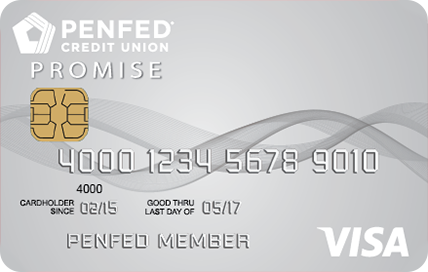












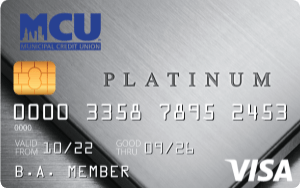
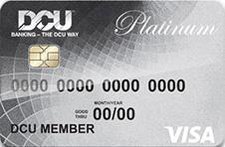




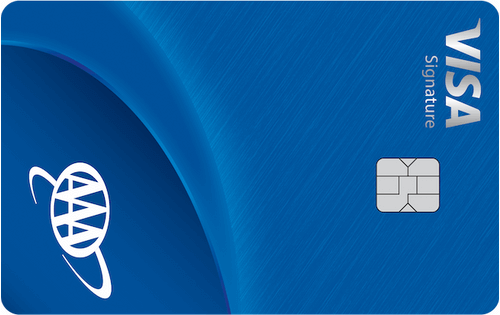
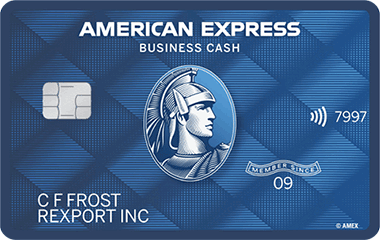
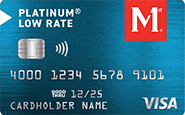
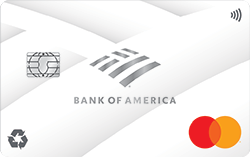


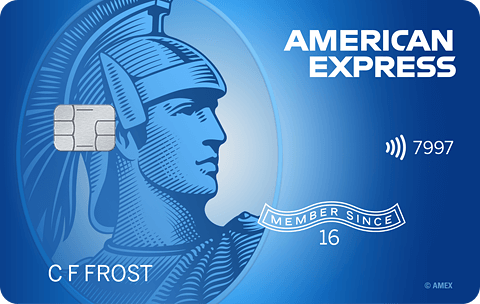




Total revolving limits 568220 (504020 reporting) FICO 8: EQ 689 TU 691 EX 682
- Mark as New
- Bookmark
- Subscribe
- Mute
- Subscribe to RSS Feed
- Permalink
- Report Inappropriate Content
Re: The Truth about Credit Card Utilization
Not to be controversial in any way and with all due respect, but in order to determine or even attempt to determine utilisation thresholds, you have to use the same utilisation calculations that the algorithm is using, meaning you have to calculate it yourself from the data in your credit report and round it up as the algorithm does.
If you use data provided by any other source, it may or may not have calculated it differently. If it was, then it’ll be an exercise in futility, doubts will arise because sometimes it works out and sometimes it doesn’t, and you’ll never be able to pin down the thresholds. Why take a chance, calculate the data yourself so you know it's correct. JMHO.
And I wanted to add a note that, while I also believe the number of accounts/revolvers with the balance is percentage based, there is a theory that raw number has some effect or may in fact be the method of measuring the metric instead of percentage.
I believe there could be a possibility of raw number being the metric or contribute to the metric on a thin file however, but that’s just an opinion and I have no evidence to offer.
- Mark as New
- Bookmark
- Subscribe
- Mute
- Subscribe to RSS Feed
- Permalink
- Report Inappropriate Content
Re: The Truth about Credit Card Utilization
@Anonymous wrote:Not to be controversial in any way and with all due respect, but in order to determine or even attempt to determine utilisation thresholds, you have to use the same utilisation calculations that the algorithm is using, meaning you have to calculate it yourself from the data in your credit report and round it up as the algorithm does.
If you use data provided by any other source, it may or may not have calculated it differently. If it was, then it’ll be an exercise in futility, doubts will arise because sometimes it works out and sometimes it doesn’t, and you’ll never be able to pin down the thresholds. Why take a chance, calculate the data yourself so you know it's correct. JMHO.
And I wanted to add a note that, while I also believe the number of accounts/revolvers with the balance is percentage based, there is a theory that raw number has some effect or may in fact be the method of measuring the metric instead of percentage.
I believe there could be a possibility of raw number being the metric or contribute to the metric on a thin file however, but that’s just an opinion and I have no evidence to offer.
I hate to tell you this birdman7, but the only way to not be controversial, is to say nothing and post nothing. See, I just proved that by making that statement controversial. I agree that trying to figure utilization is futile, but some might disagree with that too. I hope you take this post in good humor as intended.
EX fico08=815 06/16/24
EQ fico09=809 06/16/24
EX fico09=799 06/16/24
EQ fico bankcard08=838 06/16/24
TU Fico Bankcard 08=847 06/16/24
EQ NG1 fico=802 04/17/21
EQ Resilience index score=58 03/09/21
Unknown score from EX=784 used by Cap1 07/10/20
- Mark as New
- Bookmark
- Subscribe
- Mute
- Subscribe to RSS Feed
- Permalink
- Report Inappropriate Content
Re: The Truth about Credit Card Utilization
@sarge12 wrote:
@Anonymous wrote:Not to be controversial in any way and with all due respect, but in order to determine or even attempt to determine utilisation thresholds, you have to use the same utilisation calculations that the algorithm is using, meaning you have to calculate it yourself from the data in your credit report and round it up as the algorithm does.
If you use data provided by any other source, it may or may not have calculated it differently. If it was, then it’ll be an exercise in futility, doubts will arise because sometimes it works out and sometimes it doesn’t, and you’ll never be able to pin down the thresholds. Why take a chance, calculate the data yourself so you know it's correct. JMHO.
And I wanted to add a note that, while I also believe the number of accounts/revolvers with the balance is percentage based, there is a theory that raw number has some effect or may in fact be the method of measuring the metric instead of percentage.
I believe there could be a possibility of raw number being the metric or contribute to the metric on a thin file however, but that’s just an opinion and I have no evidence to offer.
I hate to tell you this birdman7, but the only way to not be controversial, is to say nothing and post nothing. See, I just proved that by making that statement controversial. I agree that trying to figure utilization is futile, but some might disagree with that too. I hope you take this post in good humor as intended.
If Birdman7 stopped being controversial I'd be disappointed. Then I'd have to stop being controversial too.































Total revolving limits 568220 (504020 reporting) FICO 8: EQ 689 TU 691 EX 682
- Mark as New
- Bookmark
- Subscribe
- Mute
- Subscribe to RSS Feed
- Permalink
- Report Inappropriate Content
Re: The Truth about Credit Card Utilization
@Anonymous wrote:Not to be controversial in any way and with all due respect,
You and I are friends, have mutual respect, and have the same goal -- trying to understand FICO -- so don't feel the need to treat me with kid gloves, just spit it out, I won't be offended
[I know you well enough to know you will eventually spit it out anyway
]
but in order to determine or even attempt to determine utilisation thresholds, you have to use the same utilisation calculations that the algorithm is using, meaning you have to calculate it yourself from the data in your credit report and round it up as the algorithm does.
I always calculate it myself -- daily.
But as to what the algorithm is doing, I have no inside knowledge of that.
If you use data provided by any other source,
I have to use the data that's in the reports, rather than the actual data that I have, if I'm going to make sense out of the FICO score changes
it may or may not have calculated it differently. If it was, then it’ll be an exercise in futility, doubts will arise because sometimes it works out and sometimes it doesn’t, and you’ll never be able to pin down the thresholds. Why take a chance, calculate the data yourself so you know it's correct. JMHO.
And I wanted to add a note that, while I also believe the number of accounts/revolvers with the balance is percentage based, there is a theory that raw number has some effect or may in fact be the method of measuring the metric instead of percentage.
True, that's another theory, and it may well be true. As I mentioned, I just don't know. There was one time when I kept gaining and losing 11 points in FICO 2, each time I toggled between 12 accounts with balances and 13. At the time it seemed to me to be based on percentage, because with 12 I was below 40% and with 13 I was above 40%. But then something happened -- I don't remember what it was -- that caused me to doubt my percentage theory.
I believe there could be a possibility of raw number being the metric or contribute to the metric on a thin file however, but that’s just an opinion and I have no evidence to offer.































Total revolving limits 568220 (504020 reporting) FICO 8: EQ 689 TU 691 EX 682
- Mark as New
- Bookmark
- Subscribe
- Mute
- Subscribe to RSS Feed
- Permalink
- Report Inappropriate Content
Re: The Truth about Credit Card Utilization
@SouthJamaica wrote:3. I would advise someone struggling to improve their credit scores to work on the assumption that 19%, 29%, 39%, 49%, etc are thresholds in aggregate revolving utilization, but I do not know that they are, or even believe that they are. I'm sure that 34% is better than 39% and worse than 29%.
I believe there is more to this story as well, based on one of the questions the FICO Score Estimator asks (this is not the SIMULATOR):

I don't think that's obfuscation. Also, we know there is a reason code related to 'Amount owed' on FICO 8, and that probably carries some more weight as balances increase above what most people normally report.
For example, 1% of a $1 million total credit line is $10,000, and that's definitely above the $6K or so average balance carried on cards (as recorded by CFPB credit survey).
- Mark as New
- Bookmark
- Subscribe
- Mute
- Subscribe to RSS Feed
- Permalink
- Report Inappropriate Content
Re: The Truth about Credit Card Utilization
@Anonymous wrote:
@SouthJamaica wrote:3. I would advise someone struggling to improve their credit scores to work on the assumption that 19%, 29%, 39%, 49%, etc are thresholds in aggregate revolving utilization, but I do not know that they are, or even believe that they are. I'm sure that 34% is better than 39% and worse than 29%.
I believe there is more to this story as well, based on one of the questions the FICO Score Estimator asks (this is not the SIMULATOR):
I don't think that's obfuscation. Also, we know there is a reason code related to 'Amount owed' on FICO 8, and that probably carries some more weight as balances increase above what most people normally report.
For example, 1% of a $1 million total credit line is $10,000, and that's definitely above the $6K or so average balance carried on cards (as recorded by CFPB credit survey).
Yes but
(1) aren't you one of the people who decry the "front end" codes as having nothing to do with the real FICO algorithms?
(2) how do you know the score estimator is more valid than the demonstrably invalid score simulators?
(3) why would the score estimator be more valid than the score simulator?
(4) do you know the source of the coders' percentages?































Total revolving limits 568220 (504020 reporting) FICO 8: EQ 689 TU 691 EX 682
- Mark as New
- Bookmark
- Subscribe
- Mute
- Subscribe to RSS Feed
- Permalink
- Report Inappropriate Content
Re: The Truth about Credit Card Utilization
@SouthJamaica wrote:
@Anonymous wrote:
@SouthJamaica wrote:3. I would advise someone struggling to improve their credit scores to work on the assumption that 19%, 29%, 39%, 49%, etc are thresholds in aggregate revolving utilization, but I do not know that they are, or even believe that they are. I'm sure that 34% is better than 39% and worse than 29%.
I believe there is more to this story as well, based on one of the questions the FICO Score Estimator asks (this is not the SIMULATOR):
I don't think that's obfuscation. Also, we know there is a reason code related to 'Amount owed' on FICO 8, and that probably carries some more weight as balances increase above what most people normally report.
For example, 1% of a $1 million total credit line is $10,000, and that's definitely above the $6K or so average balance carried on cards (as recorded by CFPB credit survey).
Yes but
(1) aren't you one of the people who decry the "front end" codes as having nothing to do with the real FICO algorithms?
If you mean the utilization calculation, definitely. It's using the standard midpoint rounding of most programming languages where FICO is using a simple ceiling function. So I would never use the front-end calculation.
But that has nothing to do with the Estimator either.
(2) how do you know the score estimator is more valid than the demonstrably invalid score simulators?
I give it much more credibility due to the way that FICO has promoted it for over a decade. It's a pretty good range estimator for profiles around 5yrs or less in age, from what I and others have experienced.
They were specific with those percentages for a reason.
(3) why would the score estimator be more valid than the score simulator?
Generally speaking, there is no reason I can point to besides what I mentioned above about my own experience and others below 5yrs total history.
(4) do you know the source of the coders' percentages?
Of course not. I just think there may be more to those percentages from FICO itself then other sources. It always needs testing to confirm.
I know for a fact I have a 5% threshold on my scorecard - I've cross it 9 times now, always losing the same EQ 8 -3, TU 8 -1, EX 8 -3 every time I am above 4.00% actual aggregate utilization - ceiling, not front-end midpoint.
- Mark as New
- Bookmark
- Subscribe
- Mute
- Subscribe to RSS Feed
- Permalink
- Report Inappropriate Content
Re: The Truth about Credit Card Utilization
@Anonymous wrote:
@SouthJamaica wrote:
@Anonymous wrote:
@SouthJamaica wrote:3. I would advise someone struggling to improve their credit scores to work on the assumption that 19%, 29%, 39%, 49%, etc are thresholds in aggregate revolving utilization, but I do not know that they are, or even believe that they are. I'm sure that 34% is better than 39% and worse than 29%.
I believe there is more to this story as well, based on one of the questions the FICO Score Estimator asks (this is not the SIMULATOR):
I don't think that's obfuscation. Also, we know there is a reason code related to 'Amount owed' on FICO 8, and that probably carries some more weight as balances increase above what most people normally report.
For example, 1% of a $1 million total credit line is $10,000, and that's definitely above the $6K or so average balance carried on cards (as recorded by CFPB credit survey).
Yes but
(1) aren't you one of the people who decry the "front end" codes as having nothing to do with the real FICO algorithms?
If you mean the utilization calculation, definitely. It's using the standard midpoint rounding of most programming languages where FICO is using a simple ceiling function. So I would never use the front-end calculation.
But that has nothing to do with the Estimator either.
(2) how do you know the score estimator is more valid than the demonstrably invalid score simulators?
I give it much more credibility due to the way that FICO has promoted it for over a decade. It's a pretty good range estimator for profiles around 5yrs or less in age, from what I and others have experienced.
They were specific with those percentages for a reason.
(3) why would the score estimator be more valid than the score simulator?
Generally speaking, there is no reason I can point to besides what I mentioned above about my own experience and others below 5yrs total history.
(4) do you know the source of the coders' percentages?
Of course not. I just think there may be more to those percentages from FICO itself then other sources. It always needs testing to confirm.
I know for a fact I have a 5% threshold on my scorecard - I've cross it 9 times now, always losing the same EQ 8 -3, TU 8 -1, EX 8 -3 every time I am above 4.00% actual aggregate utilization - ceiling, not front-end midpoint.
There is still the very real liklihood that utilization percentages might differ among each individuals scorecards. Is 80% utilization treated the same for someone with 3 credit cards with the limit of 500 each, as the same 80% for the individual with 20 cards averaging 10,000 dollars credit limit each? I doubt it. That is the issue with assumptions based on observing only your own credit profile. While the thresholds might remain the same for everyone, it might vary wildly with the effect on your score. While there is a lot of evidence to suggest that less than 9% is a threshold for everyone, the actual cost in points is likely different based on individual profiles. I know that the one card in my name that only my sister charges to as an AU, and she pays the bill, has had no easily noticable effect on my score even when that card went over 50% utilization. It was over 50% when one of my fico 08 scores was 835, and all were 820 or better, so how much could that higher than recommended utilization on the single card really make? Short of what is my normal behavior of PIF every other card, usually multiple times each month, I have found utilization not worthy of any real attention anymore. My normal credit habits keep aggregate utilization very low anyway. In general, I think we give utilization far more attention than it deserves. That is mainly because it is one of the few we can control, other than the obvious avoidance of negative payment and credit mix.
EX fico08=815 06/16/24
EQ fico09=809 06/16/24
EX fico09=799 06/16/24
EQ fico bankcard08=838 06/16/24
TU Fico Bankcard 08=847 06/16/24
EQ NG1 fico=802 04/17/21
EQ Resilience index score=58 03/09/21
Unknown score from EX=784 used by Cap1 07/10/20